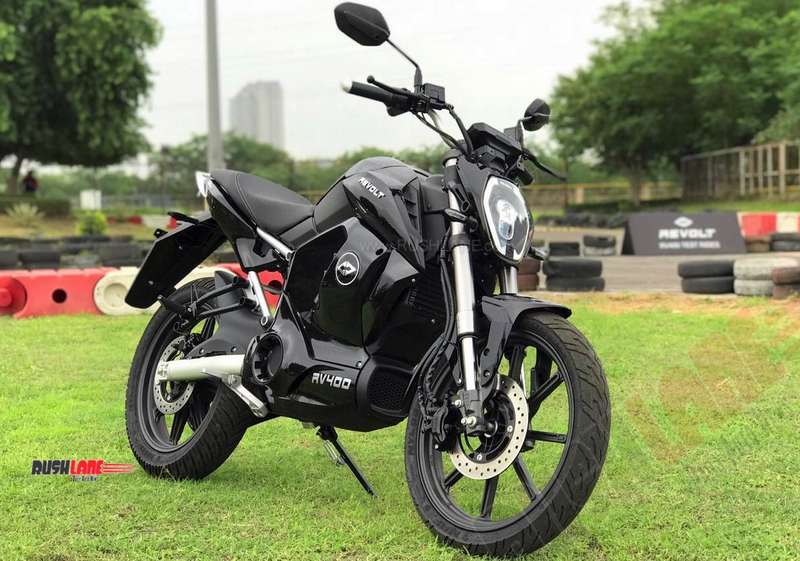
It’s not just a question of how the Revolt RV400 fares in a review by experts, this motorcycle can’t just be judged for its looks, performance, mileage, etc. like any other bike review. This has to be judged as a product that is replacing the traditional method of daily mobility.
Revolt certainly isn’t the first company to take a swing at breaking the conventional ideology of commuting by a petrol-powered two wheeler, but they might have that few specific features that can make it less inconvenient for the customers to adapt to the inevitable future of electric vehicles. Let’s discuss the points which can cause difficulty for daily commuters in transitioning from fuel burning vehicles to current guzzling ones.
Range – While we all know ARAI certified mileage of n kmpl may not be the same as what you get when you’re behind the wheel, we have a pretty good idea of what our vehicle returns per litre of fuel, which helps us to plan the refuelling points for our commute or trip, and the frequency of it. Although we are not practising storage of backup fuel at home, we are fairly confident that on our way within a few kilometers we would find a fuel station and refuel for the right amount of range that we would need further ahead.
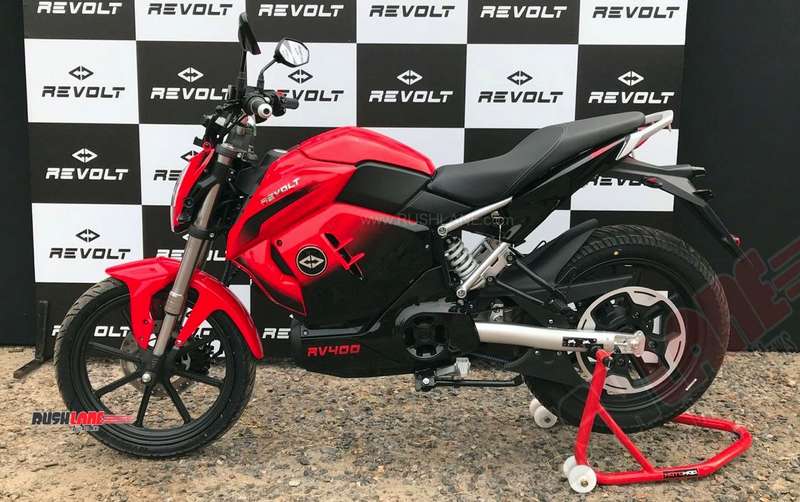
When it comes to battery vehicles, although we all have a metaphorical fuel stations at our homes, we may be quite sceptical of the convenience of using an electric vehicle regularly because our plans might change midway and we may not be able to make it back home with the charge remaining. The lack of charging stations en route is a big worry why users prefer not to deal with electric vehicles yet. Even if you could plug in somewhere and charge the vehicle, you can’t get the vehicle back on road in a few minutes. There is a minimum wait time for a certain amount of charge to happen which may not provide enough range to complete your journey.
Most importantly, you still can’t mentally associate the battery percentage with the range remaining like you associate the litres of fuel with the mileage, as the rate of battery drain is no only dependent on the kilometres you drive/ride. This doesn’t matter much in existing vehicles as you can refuel practically anytime anywhere in a matter of minutes even for an extension of 500 km.
What Revolt has done to address this matter, is a two pronged approach. First, is the battery swapping feature. There will be designated charge stations by Revolt in the cities they operate in, where you could ride in, get the battery swapped in a few minutes and ride out with full range restored to the vehicle. The swapping stations can be located using the dedicated Revolt App on all platforms of smartphones.
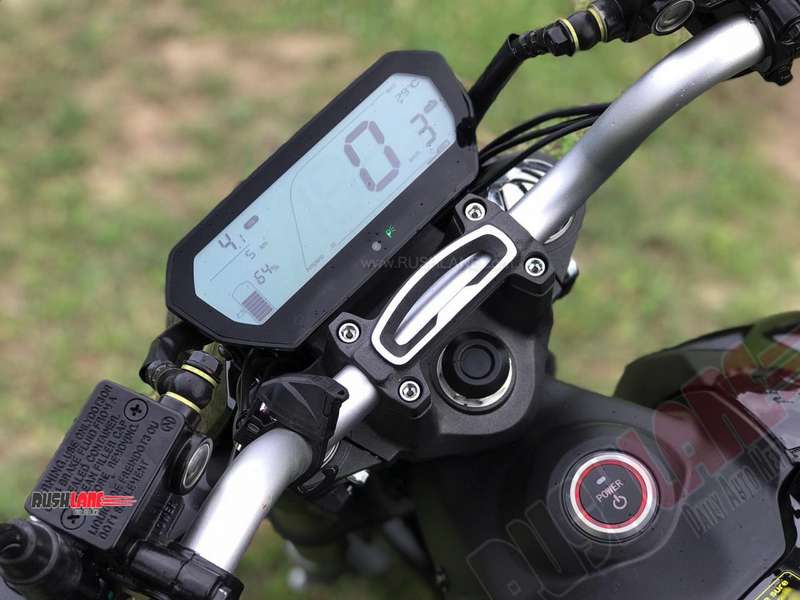
Second, is their facility to order a new battery to be delivered to your location, within their geo-limits. There would be a small service fee associated with this method for the delivery to your location, but that’s small compared to the facility you are able to avail at the time of need.
Considering that the Revolt RV400 is targeted at, and going to be used mainly by commuters, the problem of range should be a problem at all, given that the ARAI-certified range is 156km while maintaining a top speed of 45 kmph. Secondly, in situations of need, there are two good solutions to keep the bike running, apart from being able to charge it on the way at charging stations in the near future.
Convenience – For practical intents and purposes, the Revolt RV400 mimics the looks, comfort and features of a standard commuter bike, a stylish one at that, but beyond that is there a compromise of convenience factor in switching to the RV400 right away?
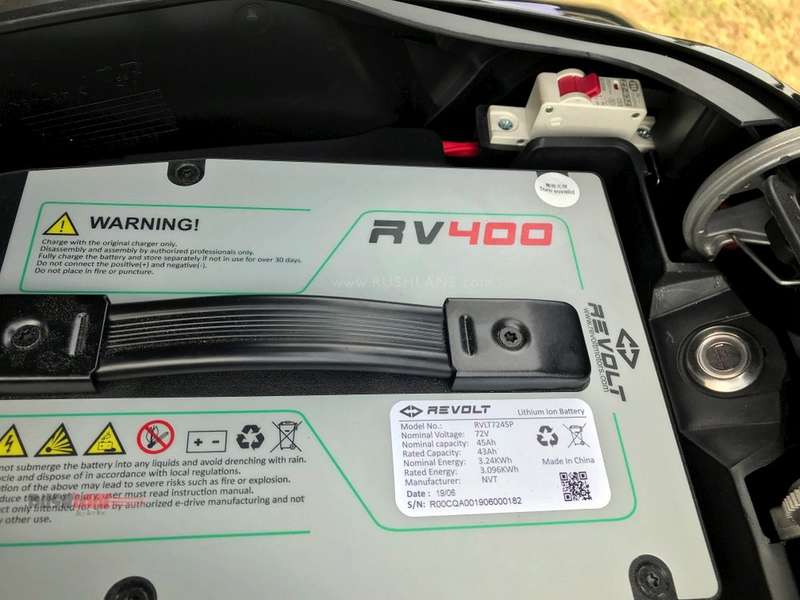
There are certain changes in operational controls you need to be aware of, otherwise you might find yourself staring left and right all puzzled, when you sit on the bike for the first time. There is no clutch lever, there is no brake pedal, and obviously there is no gear lever as well. Therefore, both your feet can remain jobless and enjoy a nice foot massage while riding, but sadly that isn’t a feature, yet.
The lever on the right side of handlebar is for the front brake as usual, and the lever on the left side of the handlebar is for the rear brake. This might lead to a fear that if you accidentally pull it all the way in, by the prolonged practise of applying clutch during riding, what would happen? It’s a good thing that the left lever does not only apply the rear brake, it also applies the front brake in proportion. That fact may not immediately comfort you, but it’s actually a good thing, called Combined Braking System (CBS), which is mandated on all entry level two wheelers in India that doesn’t fall into the mandate level of ABS.
The braking on Revolt RV400 is quite hard to apply, and quite slow to stop, despite the bike having 240 mm disc brake on both wheels. Therefore, if you mistake it for clutch and intend to pull it, very soon you’ll realise the lever restricting your pull and the vehicle slows down only negligibly. That will wake you up to the reality of what you’re actually riding. When you apply the left lever (the CBS brake lever) with all your strength, you’ll notice that the bike slows and stops quite steadily and safely. For a quick stop you can summon all your energy on both the levers.
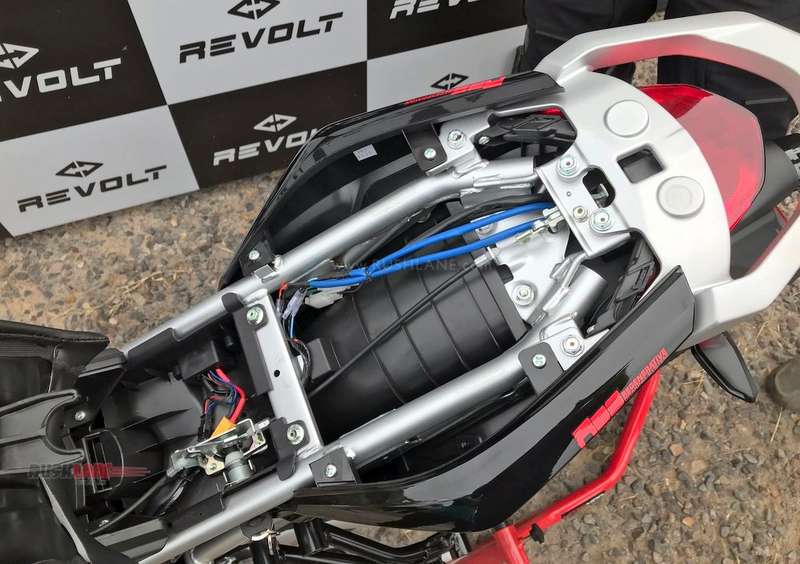
Another factor of convenience is the footrest for the rider. The bike will be delivered with the footrests fixed in a standard position, but you can at any time remove them and swap them left to right, to see their position changing from directly below the hip, to a forward stance. This can be of help for some riders.
Continuing with the convenience features on the Revolt RV400 that are not present in a regular motorcycle, we have to mention that there is a locked storage disguised as fuel tank. You can use the vehicle key to unlock what gives the impression of a hood, to access a sizeable storage tray which can be removed to carry things till your room and back to the parking. The under-seat storage is also pretty expansive, given that the bike doesn’t need a small battery below the seat, and especially the air-filter box. For an electric vehicle, you’ll find that the under-seat area has a surprisingly less amount of wires running here and there, lesser than that of a regular motorcycle. This ample storage options and space should be of great practical convenience to commuters, be it students, workers or officers.
What’s also of great convenience and a channel to achieve inner peace, is that there are very few moving parts in the vehicle, by virtue of being an electric vehicle, and therefore it doesn’t technically require much of periodical maintenance. You can use the Revolt RV400 as constantly and carefree as you would use a smartphone. We say smartphone, because just the same way Revolt is acquiring vehicle diagnostic data to improve its software which is practically what runs the bike.
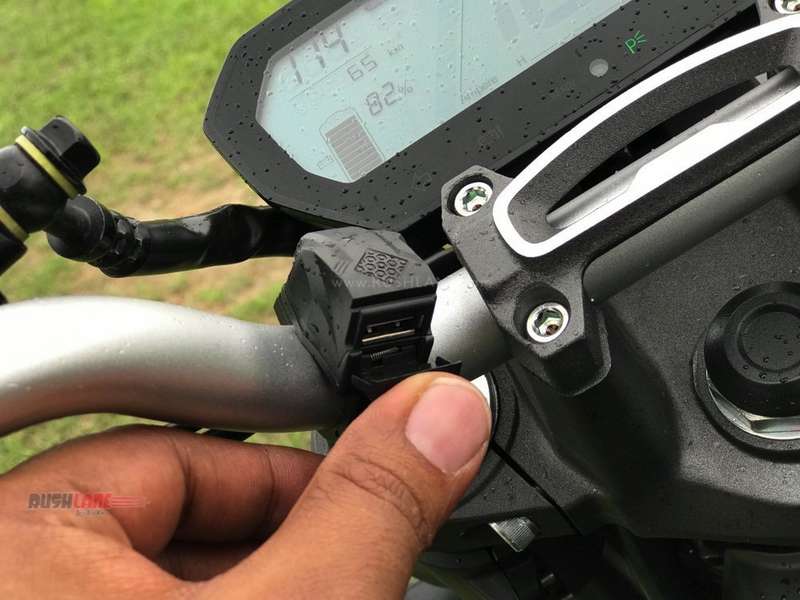
What’s not so convenient though is the lack of the phenomenon of engine braking when you decelerate, which is something that you may not realise that you’re used to by riding IC engine vehicles all these years. This is a critical point with all electric vehicles not specific to the Revolt, which affects handling and ride-ability. Adding to the burden of having to get used to riding a motorcycle with the idling feedback and road-holding characteristics of a bicycle, there is another factor here, which is specific to the Revolt RV400 – the throttle.
The electronic throttle, which is a sensor system that tells the software how much the rider’s wrist has twisted, needs a better calibration on the RV400, as it needs to feel closer to the throttle-acceleration feel of a petrol-run bike to make the transition to electric vehicles more friendly. There is no adverse problem as such in riding the RV400, but there is a lot of scope for improvement to make it more convenient and safe to gain full control of the acceleration of the bike. For example, the acceleration isn’t finely gradual, it picks up suddenly and differently at each riding mode. There is also stuttering of pickup when the throttle is held at a specific position, while trying to cruise at a fixed speed. The former can be unsafe in a rare scenario when accelerating while making a turn on a slippery road.
Points like this is what makes us think Revolt is more of a tech company than an automobile manufacturer, as such learnings come only from a rich heritage of developing motorcycles. But, what Revolt has achieved so far is commendable when looking at the RV400 holistically, and it is comforting to know that factors like throttle-map can be improved and implemented anytime to the bikes by way of a software update.
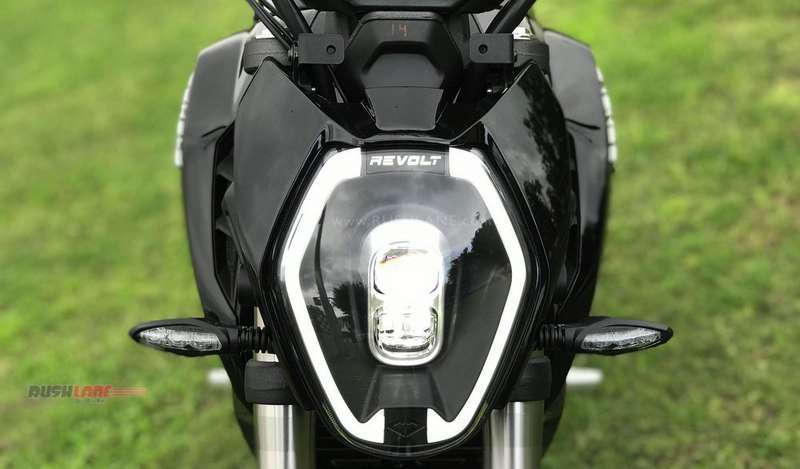
Performance and Dynamics – The RV400 performs comparable to a 125 cc motorcycle, in terms of acceleration. Though there aren’t physical gears and gear shifters, there are three riding modes hot-switchable by a three-step switch on the right side switchgear. To put it in simple terms, the first mode limits the top speed to 45 kmph, the second to 65 kmph and the third to 85 kmph. But practically, the torque (pulling capacity) and the acceleration (how quickly the bike picks up speed) are also controlled by each step, with the lower setting having all these characteristics at a lower level.
The Revolt RV400 being a light 108 kg vehicle, is quite nimble to handle. The chassis is equipped with an inverted front fork and adjustable monoshock at the rear, springing 17-inch alloy wheels with 90/80-17 tyre at the front and 120/80-17 tyre at the rear. With these hardware, it is needless to say that the bike doesn’t feel like an electric toy, it very much looks and feels like a proper two wheeler to ride, except for some fine-tuning of the dynamics of vehicle geometry and suspension which could make the bike more engaging as well as comfortable to ride, not that the target audience would care. Bottom-line, the bike performs admirably for the purpose it is marketed for. Satisfying riding-enthusiasts is a whole other subject.
Value Addition – So, apart from saving money on running costs (let’s not talk about the capital spent on selling your old bike and buying this, yet), you get cool features for transitioning to green mobility, like a smartphone app. It might appear as only one item, while you’re expecting a list of value additions, well, all that comes in the description of the said smartphone app.
To list a few of a plethora of features, you can use the Revolt App to locate your motorcycle via GPS, set a geo-fence to get an alert when someone uses your motorcycle beyond your reach (like your kid who tries to get past his home to college radius), ability to turn the motorcycle off and stop it anytime (when it is used by an unauthorised person), start the motorcycle remotely with a simple voice command via services like google assistant, check your daily ride statistics, find a swapping station, order a new battery, check up on vehicle statics like odo, trip, etc., store vehicle documents within the app to fetch it quickly when needed, and most importantly to some, to change the exhaust note!
The Revolt RV400 comes with a faux exhaust sound, which may sound ridiculous to read about, but seems like a great feature to not just pretend riding a sports bike, but actually to help the transition to riding a quiet electric bike. This really helps with adapting to the new riding behaviour and setting the frame of mind, and eventually turning it off to enjoy the bliss of finally comfortably riding an electric motorcycle.
Verdict – We were initially quite pessimistic about the idea of accepting migrating to electric mobility, but thanks to good enough build quality and some clever features by Revolt, we are growing from getting prepared to accept electric motorcycles. The Revolt bike is practical enough for daily use, and comes with smart charging options.
Speaking about dealers and network – the motorcycle is only on sale in Delhi and Pune. Delhi has 4 dealer operational. Pune has 2 dealers coming soon. More cities will be added soon. Network is getting created as we speak. Revolt is selling the bike as via a monthly EMI option, under which maintenance cost is included. Price of the plans start from Rs 2,999 for the RV300, Rs 3,499 for the RV 400 and Rs 3,999 for the top of the line RV400 Premium. These are called MyRevolt Plans, and the bike is only sold via these plans. This makes it easier to purchase a Revolt electric motorcycle, as you do not need to make a huge investment / commitment.
Disclaimer – For this review, Revolt Motors invited and hosted us. And they paid for our travel and food.

